They're the ultimate spring icon, says garden writer Melissa Mabbitt, so you're sure to want to know when to plant tulip bulbs. Their classic wine glass silhouette adds a grace and style to gardens that can’t be matched by any other outdoor plant this season.
From as early as March through to mid-May, tulips will be grabbing attention in your outdoor space. The gorgeous glowing cups of colour atop graceful stems have a glamorous style that makes them the most elegant of spring flowers. Plant them by the dozen to make the most of their brief but glorious season.
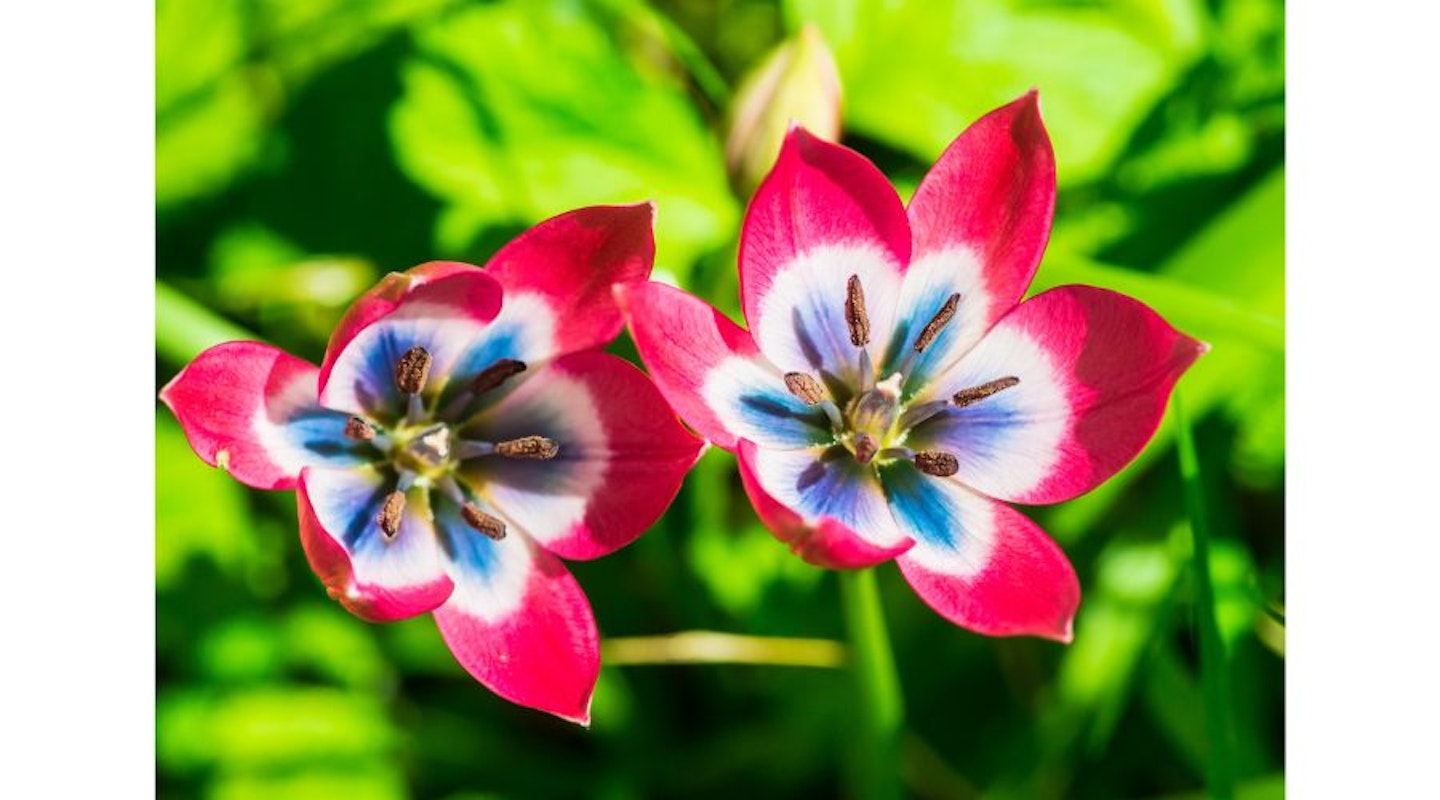
In jewel-bright shades, with a mixture of looks from that classic goblet-shape to funky fringed forms and soft and sumptuous peony-like rosettes, there will be a tulip that suits any garden style. If your space is small, you can grow tiny tulips, such as red and purple ‘Little Beauty’, or the bright yellow ‘Honky Tonk’, which will thrive in a container filled with compost and grit.
Tulip plants and their varieties
There are thousands of different tulips, and you can grow almost any colour at home. Garden centres tend to offer just a couple of dozen tried-and-tested favourites that are guaranteed to look gorgeous, so you won’t be overwhelmed when you browse.

Alongside the classic shapes, you can also buy tulips with more unusual looks. Parrot tulips, such as ‘Blumex’, have petals like the fabulous plumage of an exotic bird. Fringed tulips have rounded flowers with tasselled, crystalline edges and make a similar quirky statement. Try deep aubergine ‘Cuban Night’ or hot pink ‘Crispion Love’.
For a more chic shape, there are the lily-flowered tulips, which have gracefully flaring petals in pure colours.
Tulip flowers are stunning but often short-lived, the petals fading and falling away after two or three weeks. But there are so many varieties that flower through the months of March and May, that you can create a succession of colour all spring if you plant a few different kinds together.
The earliest tulips appear with daffodils and because the weather is cool, their petals will last the longest. Of these ‘Purple Prince’ is one of the most gorgeous, with velvety purple petals. Early tulips are shorter, growing to about shin height, making them perfect for pots. Planted in numbers they will still have plenty of impact in flowerbeds. Later varieties, such as the gorgeous peony-flowered and sugar pink ‘Angelique’ will be taller and often more blousy.
To make the most of a long succession of different tulip varieties, mix up the bulbs then plant them scattered across a flower bed so their colour is dotted throughout. Another design trick for more dramatic pops of colour is to plant a group of early tulips towards the back of a bed, then a mid-season clump in the middle, and finally a late-flowering group at the front. As one clump dies away, the tulips in front will start to look their best, hiding messy older stems.
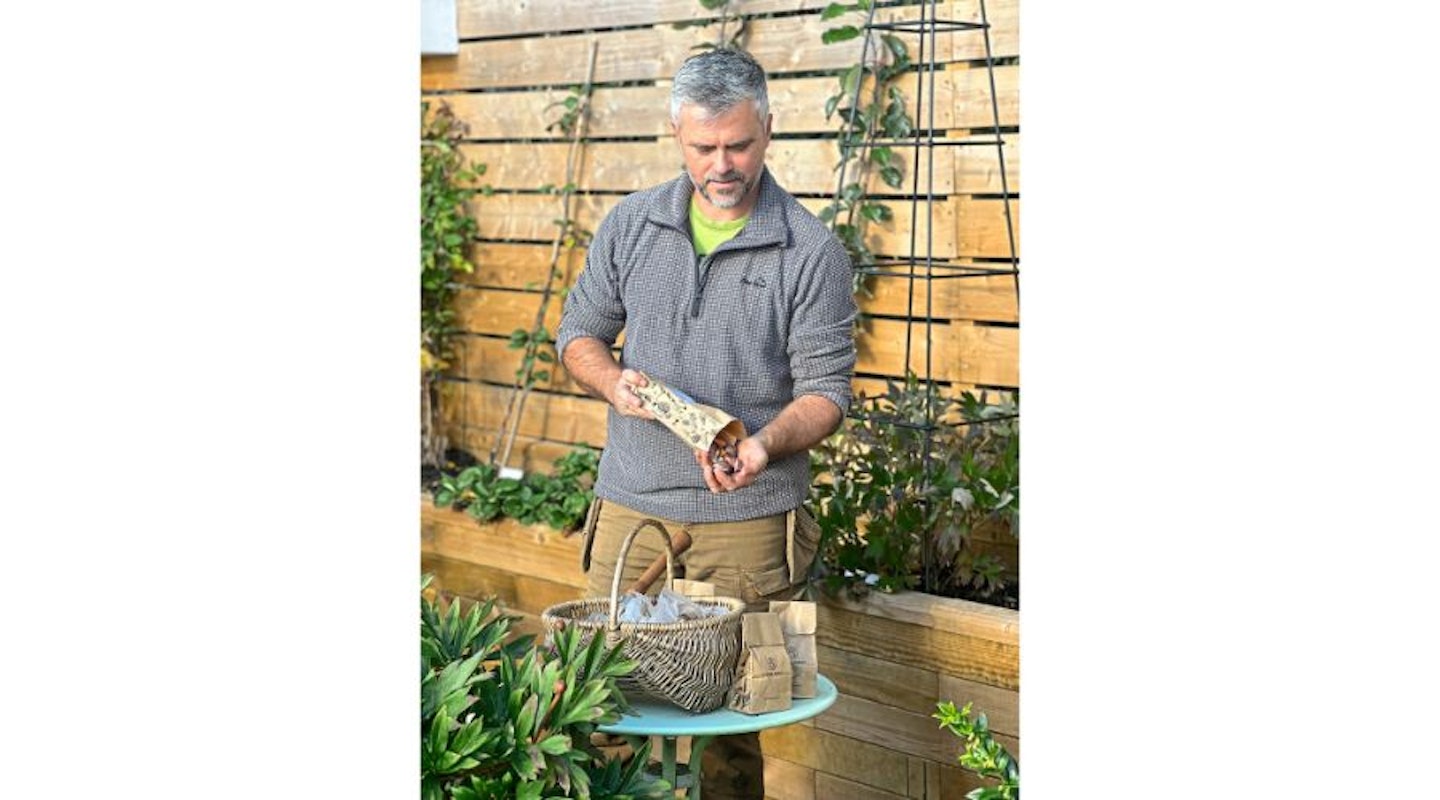
Planting tulip bulbs
The easiest and cheapest method involves buying bulbs in autumn to plant in November. You’ll be able to afford to plant more and create more impact. However, bulbs have to be in the soil before winter begins, as the colder weather starts the growing process.
To plant bulbs in the ground, dig a 10-15cm deep hole and pop the bulb in, pointy end up. To get the depth of the hole just right for whichever type of tulip you’re growing, aim for a hole that’s two to three times as deep as the bulb is high. It doesn’t need to be exact as it’ll find its way up to the sunshine anyway!

All tulips love soil that’s light, sandy and well-drained. If your soil is sticky like clay and heavy to lift when you dig into it, you’ll be better off growing them in containers. If your garden tends to be on the soggy side, make the hole a few centimetres deeper and drizzle in a small handful of horticultural grit first, so the bulb sits on a little well-drained bed. Fill the hole back up with soil.
They need full sun to grow strongly, although if they are partly shaded the flowers last longer. Try to position them out of the wind, as gusty weather can snap the slim stems, especially if they are tall or have larger flowers.
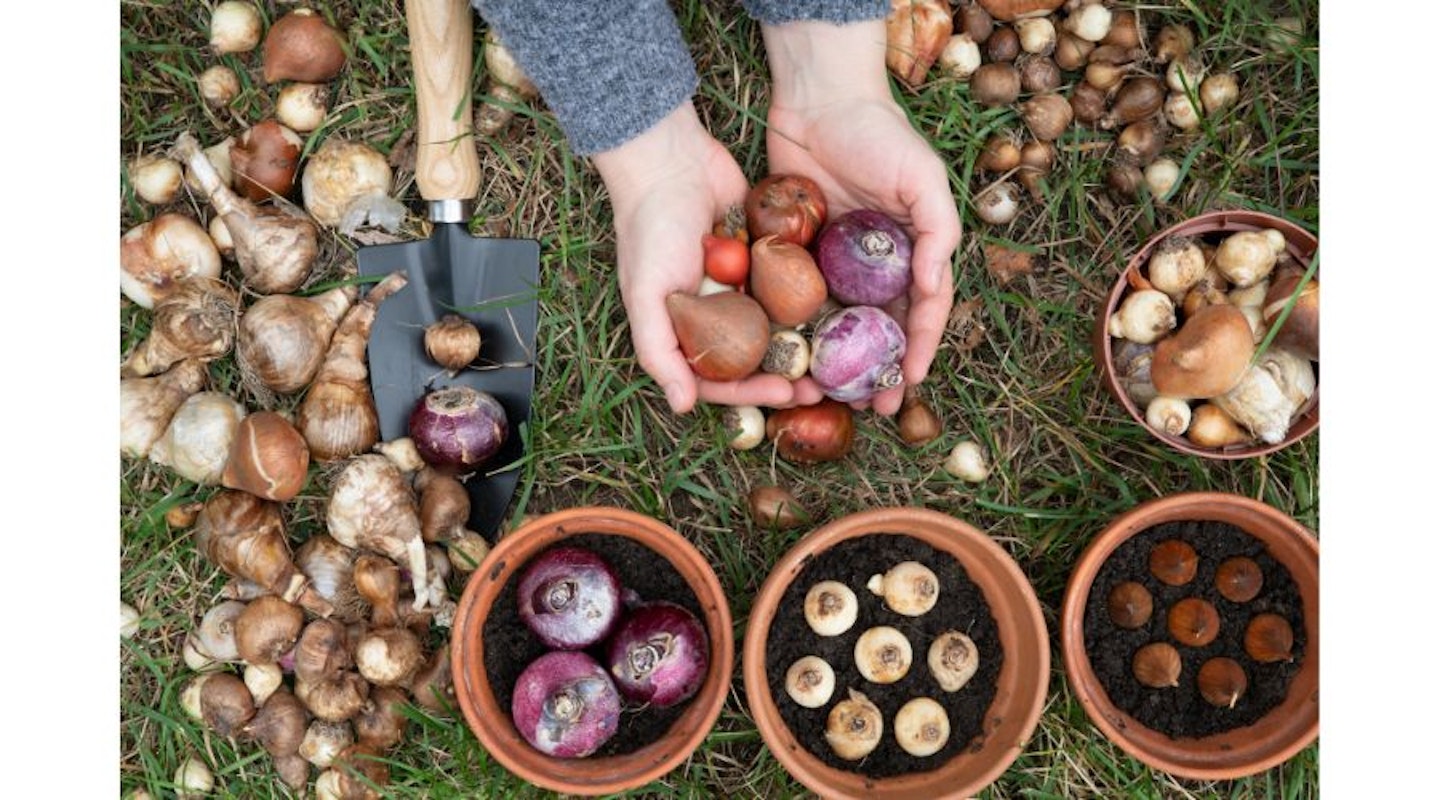
Keep the bulbs 8cm apart in beds, but in containers, it’s fine to squeeze them closer, and just leave a centimetre or two between each. For a packed pot, you can also plant the bulbs in layers up to a depth of 30cm. Use multi-purpose compost and make sure the pots have holes in the base so water can drain freely. Water well, but then only when the soil is dry, so you probably won’t need to water them at all until late spring unless your pot is in a sheltered position.
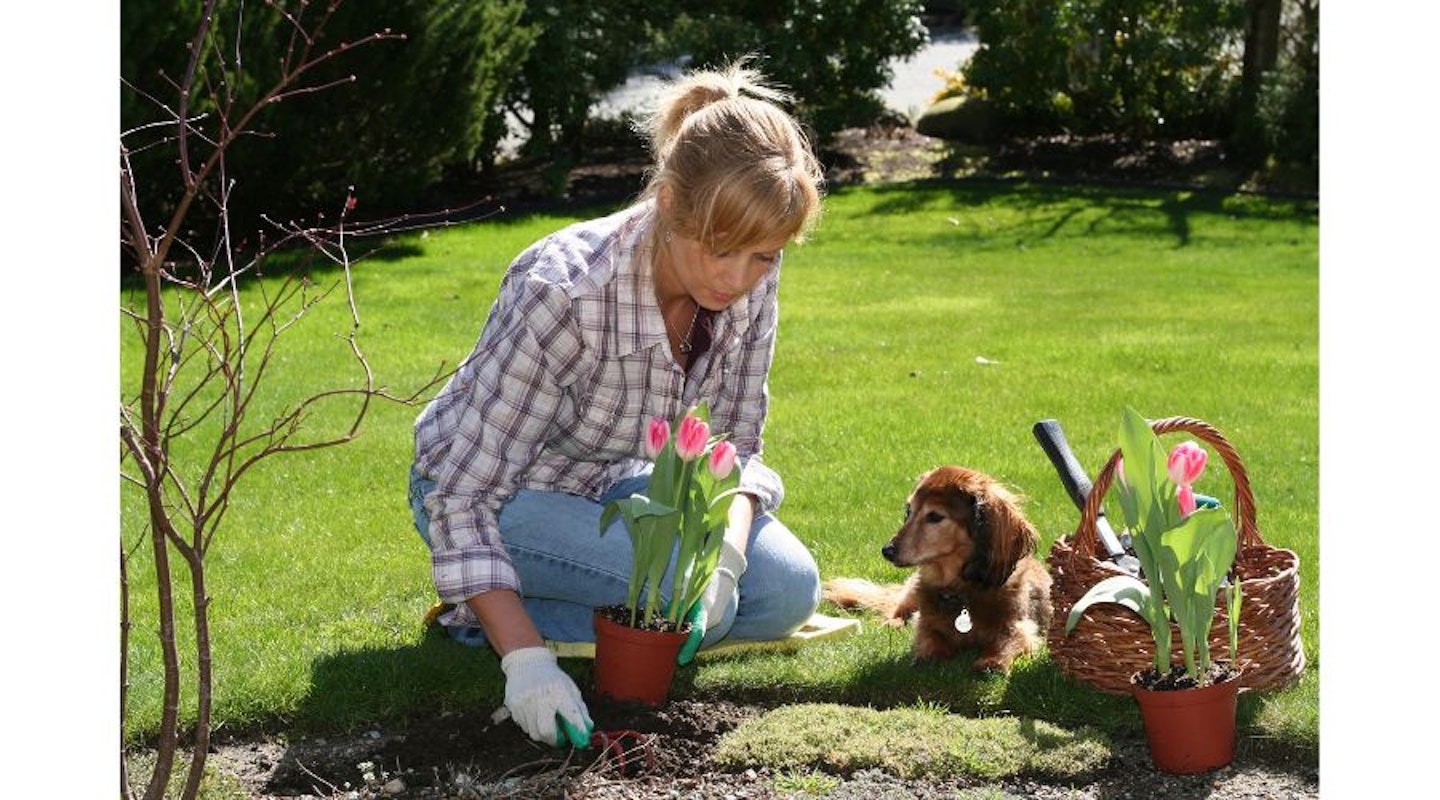
You can also buy potted bulbs from garden centres and supermarkets in early spring and plant them directly in your garden. Choose pots where the leaves are out but before the flower bud has opened, so you get the benefit of the whole flowering phase. To plant, dig a hole in the soil the same size as the pot. Gently remove the tulips from their container, and you will see a mass of white roots holding the compost together. Try not to disturb these and gently slot your tulips into the hole and firm the soil back into place.
A shop-bought plastic pot of shooting bulbs is a brilliant way to fill an empty spot in the garden. Use a trowel to dig a narrow hole the same size as the pot. Water the bulbs, then tip them out of their pot and pop the whole clump in together.
Post-planting care
Tulips flower really well in their first year, then dwindle in the second, leaving just the green leaves in the third. Consequently, some people prefer to replace them every year as you would seasonal bedding plants.
If you’ve planted yours in containers, all you’ll need to do is lift them out when they’ve finished flowering, leaving a handy hole to plant something new in. If they’re in the ground, dig them up while the leaves are still visible as they will be almost impossible to find once they have died away.
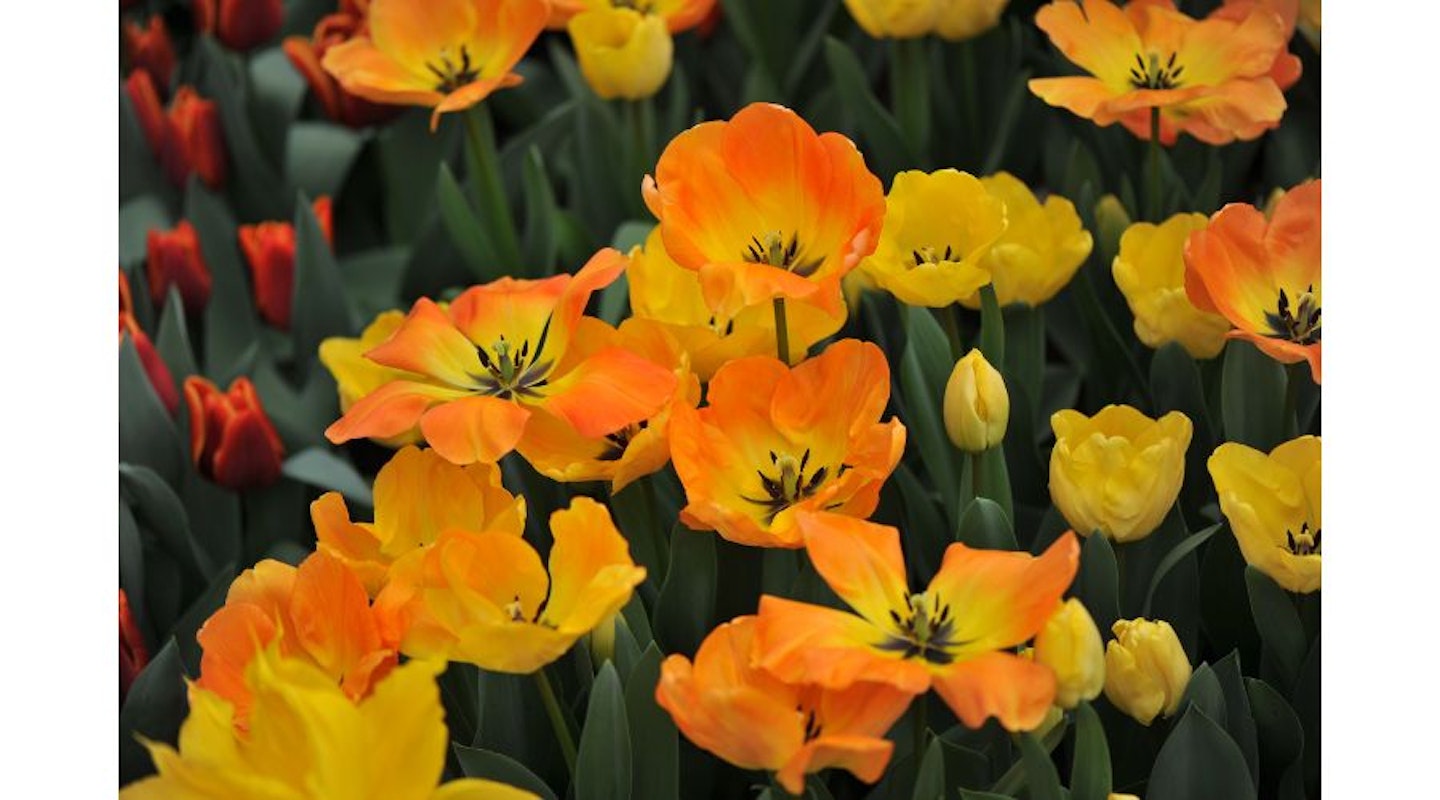
The one type of tulip that will reliably come back year after year is the tall and colourful ‘perennial tulip’. These are stately flowers with large blooms growing to above knee height. They look glorious planted in groups where they rise above shorter plants to make a real statement. Most of these are bright colours such as the golden variety ‘Daydream’, but subtler shades are a good choice for cool or pastel-coloured garden designs, such as the peachy pink ‘Apricot Impression’, lemon sorbet-shaded ‘Ivory Impression’ and the misty mauve ‘Light and Dreamy’ (all available from peternyssen.com).
After the flowers fade, nip off the flower stem at soil level but leave the leaves in place to nourish the bulb, until they go brown and wither (if they tug away from the bulb easily, they’ve finished doing their job) and can be removed, and there’s a good chance the bulbs will bloom for another year.
Tulip bulb FAQs
Can I plant tulips under trees?
Tulip bulbs are fantastic for awkward spots under trees. Use a trowel to dig small holes in the soil around the base of the tree, taking care not to damage its roots. The tulips benefit from the extra light let through the tree’s bare winter branches, and then go dormant as the canopy comes into leaf.
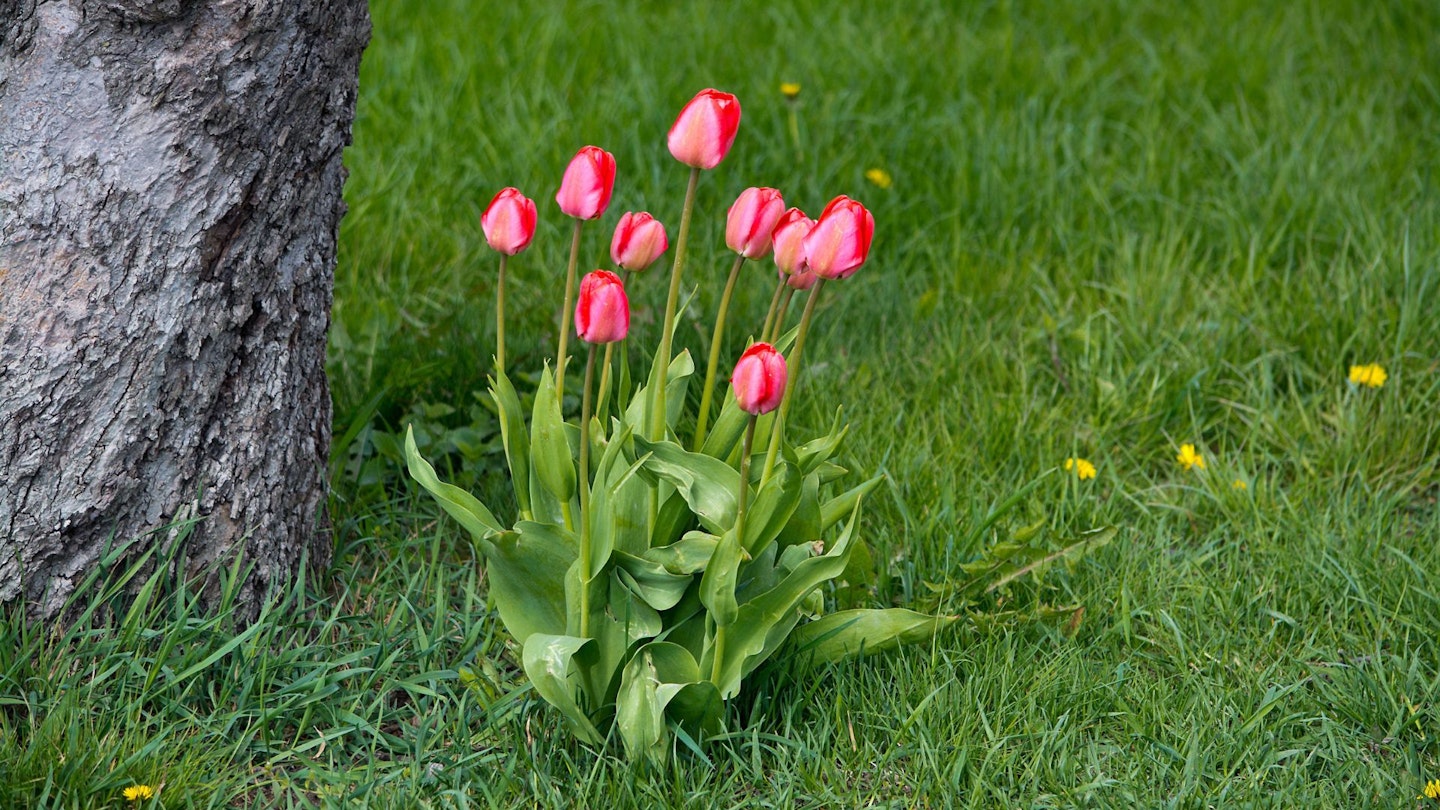
Can I plant tulips in my lawn?
Lots of tulips will pop up through grass, creating a temporary meadow at the start of the year. Use a bulb planter to dig out narrow holes in the lawn and drop individual shooting bulbs in, backfilling with gritty compost. Consider using small species of tulips for this. The shorter flowers will drop their seed into the grass, gradually increasing the size of your flower patch. Try the Sprenger tulip (Tulipa sprengeri) which has bright red flowers, or the horned tulip (T. acuminata) with its striking, ultra-fine, flaming yellow and scarlet pointy petals.
Can I plant individual tulips?
Individual tulips can sometimes look a bit isolated, so it’s best to plant bulbs in bigger groups of at least six or seven. A good trick is to toss a handful of bulbs into the air and plant each one where it lands. This will create pretty pools of colour without too many straight lines.
Can I mix tulip bulbs with other spring bulbs?
Tulips mix really well with other spring bulbs and flowers, so try interweaving them with alliums for a wilder style. Or you can create heady clouds of scent by pairing tulips with hyacinths or wallflowers.
Are tulips scented?
A few tulips, usually those with amber colouring, are scented with a sweet and fruity fragrance. They are potent enough to detect in the garden if you plant them near your patio or in a pot on a table where their scent will be closer at hand. The fragrance will always be strongest on a sunny day, but if you cut a few blooms and bring them inside, they’ll be even stronger. Grow one or all of these sweetly fragranced varieties: ‘Apricot Beauty’, ‘Brown Sugar’, ‘Ballerina’ or ‘Veronique Sanson’, which are all shades of burnished orange.
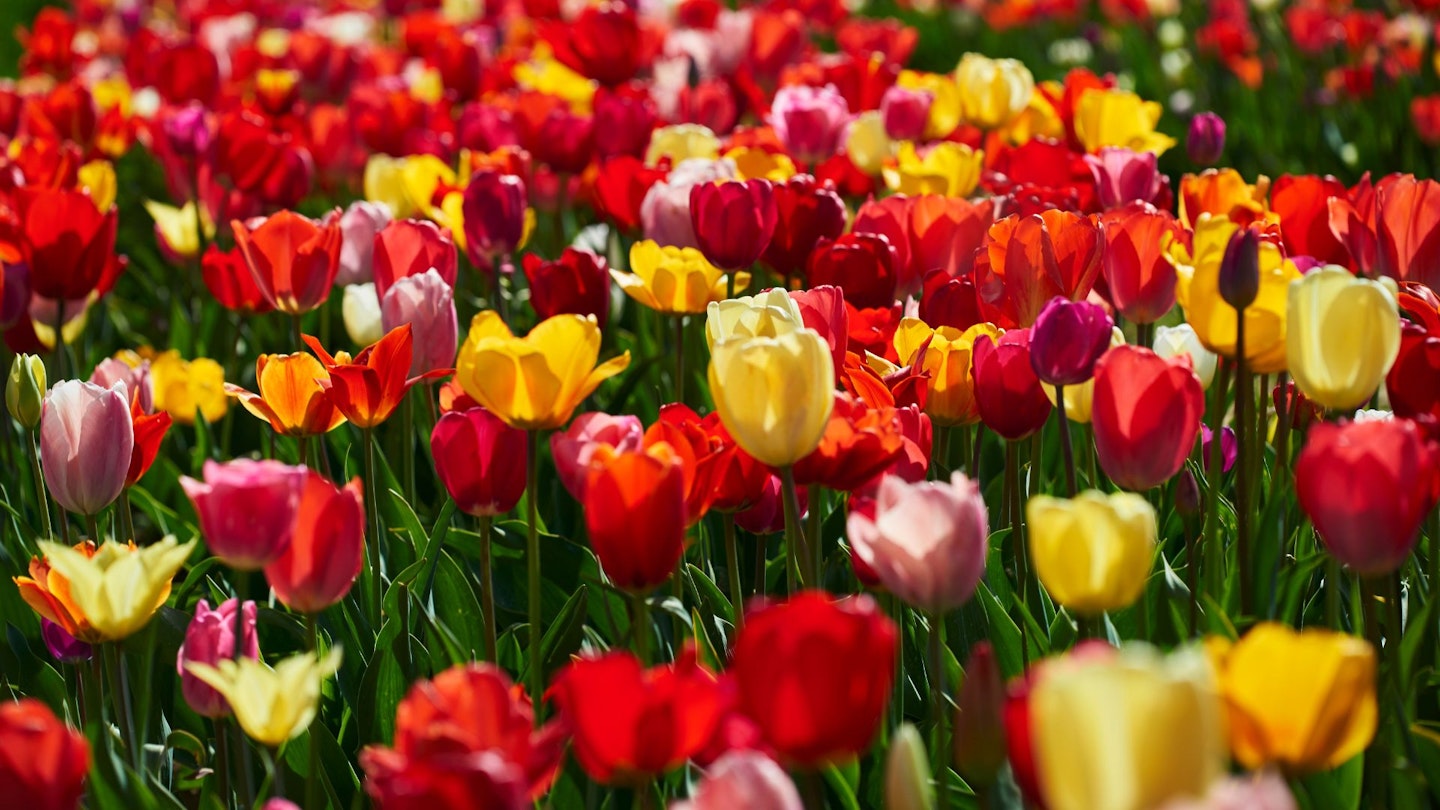
For pink varieties with fragrance, try the pale-pink ‘Peach Blossom’, sugar-pink peony-flowered ‘Angelique’ or deep magenta ‘Margarita’.
How do I make cut tulips last longer?
To stop drooping, wrap stems tightly together in newspaper – keeping them as straight as possible – and stand them in a bucket of water. After a couple of hours, the stems will ‘set’ and stay that way.
Strip any leaves that are below the waterline – they’ll make the water cloudy and shorten the flowers’ vase life. It’s not usually necessary to refresh the vase water for a single bunch of tulips, but adding one drop of household bleach will help keep it clean and fresh for longer. When the flowers fade, shorten the stems on flowers that are still open and pop them in a jam jar for an extra few days of bloom.
What to read next
10 best gardening books for beginners to herb your enthusiasm
Subscribe to Modern Gardens magazine and get the most out of your outdoor space. Discover everything you need to know to make your outside space look fantastic, quickly and easily, with hundreds of simple ideas, designer tricks, affordable products and expert advice in every issue of Modern Gardens. View our latest subscription offers to save on shop prices.
Angela Kenny is features and production editor for Modern Gardens magazine and is always on the look out for new and trending modern garden inspiration.
